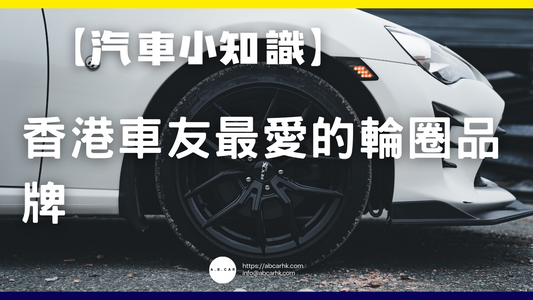[Home Tips] How to seal the window completely if it is leaking?

🧐 Why are windows in Hong Kong prone to water leakage?
Hong Kong's weather is humid and rainy, especially during the rainy season from May to September and the typhoon season from August to October . Heavy rain and crosswinds make it easy for rainwater to seep in through window gaps. Common causes include:
-
Sealant aging 🕳️
- The waterproof adhesive (such as silicone) between the window frame and the wall will harden and crack over time.
-
Window slots clogged 🚫💧
- The drainage holes at the bottom of the windowsill were clogged with dust and leaves, and rainwater accumulated and flowed back into the house.
-
Wall cracks 🧱
- There are cracks in the cement layer of the exterior wall near the window, and rainwater seeps into the wall through the cracks and then flows into the room.
-
Improper installation 🔧
- There is no waterproof layer between the window frame and the wall, or the window slot is tilted in the wrong direction.
-
Typhoon crosswinds 🌪️
- High-rise units in Hong Kong are greatly affected by wind pressure, and rainwater can blow directly into the window gaps.
🔍 How to check the source of water seepage?
-
Observe the water seepage location
- Seeping in from the top, side, or sill of the window → Mostly due to sealant problems.
- Seeping in from the bottom of the windowsill or the lower wall → The drain hole may be blocked or there may be cracks in the wall.
-
Manual testing
- When the weather is clear, use a hose to gradually spray water outside the window and observe where the water starts to seep.
- Editor's tip : When testing, spray water in sections (from low to high) to facilitate locking the position.
💡 Editor's Pick (Applicable in Hong Kong)
A. DIY temporary solution (short-term emergency)
Suitable for minor water seepage and situations where it is difficult to find a repairman immediately.
-
Sealing and filling
- Use waterproof silicone glue (Silicone Sealant) or polyurethane waterproof glue (PU Sealant) to seal the cracks.
- Glue for outdoor use needs to be weather-resistant, UV-resistant and mildew-resistant.
-
step :
- Clean up old glue and dust.
- Wipe clean with alcohol or diluted bleach.
- Apply glue evenly and flatten it with a scraper.
- Editor's Tip : Hong Kong is humid in the summer, so choose a dry day for construction. Avoid water exposure for at least 24 hours after applying the sealant.
-
Temporary waterproof sticker
- Use waterproof tape to seal window gaps to prevent rain from entering.
- Disadvantages: low durability, will fall off after being exposed to the sun and rain.
-
Unclogging the drain hole
- Use wire or a bamboo stick to clear the window drain holes to ensure that water can flow out.
B. Professional and thorough repair (long-term solution)
It is recommended to find a professional waterproofing master to handle it, especially for exterior wall projects that have safety risks.
-
Remove glue and re-print
- Scrape away all the old glue around the window frame, clean it, and then reapply high-quality waterproof glue.
- PU waterproof glue (high tensile strength and durability of up to 5-8 years) is used for outdoor parts; neutral silicone glue can be used indoors.
-
External wall waterproofing repair
- If the cement cracks on the exterior wall are leaking, you must first fill the gaps with waterproof mortar or epoxy resin, and then apply a layer of waterproof coating.
- Editor’s Tip : Some old buildings in Hong Kong require the building owners’ corporation to arrange for exterior wall repairs, and private work is not allowed.
-
Install water deflectors or windshields
- Install a slightly inclined water barrier outside the window to reduce the amount of rainwater hitting the window gaps.
- Add windproof strips between the window frame and the window sash to reduce the infiltration of side wind and rain.
-
Window slot tilt correction
- If the window slot is tilted inward, the windowsill needs to be removed and re-laid to ensure that rainwater flows out naturally.
📊 Comparison table of water seepage prevention methods
| method | cost | Durability | Effect | Applicable situations |
|---|---|---|---|---|
| Waterproof silicone sealant | 💰 | 1-3 years | ⭐⭐⭐ | Minor cracks |
| Waterproof tape sealing | 💰 | 1-3 months | ⭐⭐ | Temporary emergency |
| Drain hole dredging | 💰 | long | ⭐⭐⭐ | Drain blockage |
| PU waterproof glue reapplied | 💰💰 | 5-8 years | ⭐⭐⭐⭐ | Moderate water seepage |
| External wall waterproofing repair | 💰💰💰 | 8-10 years | ⭐⭐⭐⭐⭐ | Severe water seepage |
| Water retaining plate + rubber strip | 💰💰 | 3-5 years | ⭐⭐⭐⭐ | High-rise wind and rain |
🚨 A friendly reminder from the editor
- High-rise exterior wall works in Hong Kong are considered high-risk and must be carried out by qualified personnel .
- If the water seepage problem involves the external walls of the building, it may be a public area maintenance and requires notification to the property management office or corporation.
- If water seepage is not dealt with for a long time, it will cause mold on the walls and rust on the steel bars, and the maintenance costs will double.
- The construction surface must be kept dry before applying glue, otherwise the new glue will fall off quickly.
📌 Editor's Summary
Water seepage problems in Hong Kong windows are often linked to aging sealants, clogged drain holes, and cracks in exterior walls . While waterproofing glue or tape can be used as a short-term fix, a complete solution is best achieved by hiring a professional to remove the sealant and reapply it, repair the exterior waterproofing layer, and install water retaining devices . Regular inspections and cleaning of drain holes will ensure peace of mind during typhoon and rainstorm seasons.



